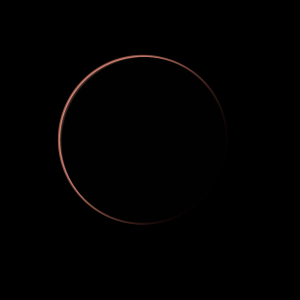|
|
Space Astro
|
Info for exoplanet "Pyaa-po"
| Scientific (actual) data |
|---|
| Name | K2-33 b |
| Planet status | Confirmed |
| Planet mass | 3.7 |
| Radius | 0.45 |
| Orbital period | 5.42486 |
| Semi major axis | 0.0409 |
| Orbit eccentricity | 0 |
| Inclination | 89.1 |
| Discovered | 2016 |
| Updated | 2025-02-13 |
| Omega | 0 |
| Tconj | 2456900 |
| Tzero tr | 2456900 |
| Impact parameter | 0.16 |
| Publication | Published in a refereed paper |
| Detection type | Primary Transit |
| Mass measurement type | Radial Velocity |
| Radius measurement type | Primary Transit |
| Alternate names | EPIC 205117205 b, 2MASS J16101473-1919095 b, EPIC 205117205.01, WISE J161014.73-191909.6 b |
| Star name | K2-33 |
| Right ascension | 242.56° |
| Declination | -19.32° |
| Mag v | 16 |
| Mag j | 11.095 |
| Mag h | 10.332 |
| Star distance | 139.8 |
| Star mass | 0.56 |
| Star radius | 1.05 |
| Star sp type | M3.3 |
| Star age | 0.009 |
| Star temperature | 3540 |
| Star alternate names | EPIC 205117205, 2MASS J16101473-1919095, WISE J161014.73-191909.6 |
| Wikipedia article | K2-33 b |
Back
| |
| Fictional info (?) |
|---|
| Suggested name | Pyaa-po |
| Planet type | Large hot gas giant |
| It is the coldest planetary atmosphere in its solar system, with a minimum temperature of 80°K (-193°C), and has a complex, layered cloud structure with methane thought to make up the lowest clouds, and xenon the uppermost layer of clouds. |
| Atmosphere | Xenon | 43% |
| Methane | 27% |
| 2H2O | 23% |
| Nitrogen | 3% |
| Hydrogen peroxide | 2.7% |
| Carbon dioxide | 0.52% |
| Ethane | 0.0073% |
| Atmospheric pressure | 50 bar |
 |
| Moon | Nyumesho-mihe | Medium-sized irregular gaseous asteroid |
| Gopa | Medium-sized slightly egg-shaped rocky moon |
| Mapyurya Pyu | Huge almost round crater-filled comet |
| Jipyo | Medium-sized potato shaped gaseous asteroid |
| Zuharyo Kyapo | Small round oceanic planetoid |
| Bagabyu To | Medium-sized almost round gaseous asteroid |
| Hemyufu | Medium-sized slightly egg-shaped gaseous asteroid |
| Nyoyo Shoru-epe | Very small round ice asteroid |
| Tagebya Bya | Very small irregular oceanic moon |
| Kapyuju Gebu | Very small round crater-filled moon |
| Janecha | Small slightly egg-shaped crater-filled moon |
| Komo Ryahyu | Very small round crater-filled moon |
| Shina Sowatsu-ga | Huge round rocky moon |
| Setosu | Very small round gaseous comet |
| Chigo Oyono Da | Very small almost round crater-filled moon |
| Nwaka Mako | Very small round crater-filled asteroid |
| Rochi | Medium-sized round rocky asteroid |
| Nyoperu-dodo | Medium-sized potato shaped ice asteroid |
| Woke | Very small potato shaped oceanic asteroid |
| Robe Hyubyo-wa | Large potato shaped rocky moon |
| Google search for Pyaa-po |
|
Website by Joachim Michaelis
|
|
|
|